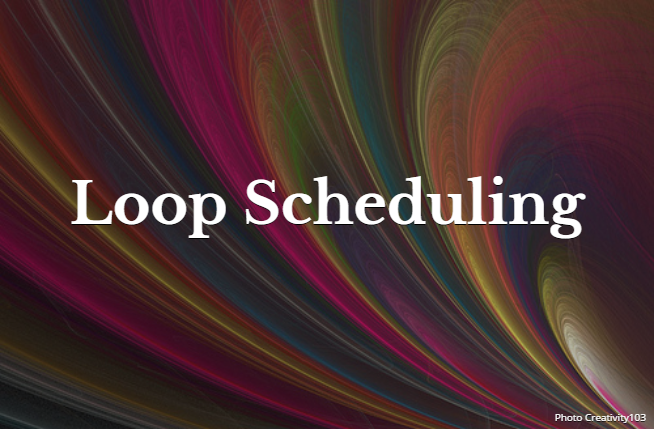 Loop scheduling has become a mainstay in our homeschool. To keep things fresh and interesting, I often change how our school days are organized every month or two. Sometimes we only use loop scheduling and sometimes loops are part of the mix.
Loop scheduling has become a mainstay in our homeschool. To keep things fresh and interesting, I often change how our school days are organized every month or two. Sometimes we only use loop scheduling and sometimes loops are part of the mix.
Loop schedules are pretty easy to use and keep up with each day. It requires you to set up a list of subjects or resources. Once the list is finished, you loop back up to the top. Typically, a certain amount of time is set aside to work on the loop and once the time is up you call it quits. Then the next day you pick back up where you left off on the loop.
Using a loop schedule is a great way to fit in all of those things that you never seem to have time to do. It is also a necessary element for our homeschool because I like to use lots of different resources and a loop schedule keeps things organized.
Different ways to use a loop schedule:
Loop all of your subjects.
Put all of the subjects in a list. Decide on a reasonable amount of time to spend working on the loop during the school day. Start at the top of the list and make your way down the list. Once you get to the bottom of the list, loop back up to the top. One thing I love about this set-up is that it is easy to allow for tangents because a child can spend extra time on a subject without throwing anything else off.
Put all the subjects on the loop with the more important subjects appearing more often and the every once in a while subjects only getting on there once. Here is a sample of a loop where a child does math, phonics, reading, history, spelling, handwriting, and art with art being a subject that isn’t an everyday subject. We like every day to be different so sometimes I randomize the list when we are done so it makes every day unique.
- Math
- Phonics
- Reading
- History
- Spelling
- Handwriting
- Math
- Phonics
- Reading
- History
- Spelling
- Handwriting
- Math
- Phonics
- Reading
- History
- Spelling
- Handwriting
- Art
Loop some of the subjects
Another way to do a loop is to set aside subjects that you need to get to everyday and put everything else on a loop. So if the daily necessary subjects are math, handwriting, and reading, those would not be on the loop. You would start the loop after those subjects are completed. I like doing it this way because I can add in lots of extras while still getting to the necessary things everyday.
- Phonics
- History
- Spelling
- Phonics
- History
- Spelling
- Phonics
- History
- Spelling
- Art
Looping multiple resources
I also use loops for multiple resouces. We are quite eclectic with a deep and wide approach so I end up using lots of different resources for one subject. If I made a math loop for my 1st grader it might look like:
- Singapore
- Living math
- Singapore
- Mental Math
- Cyberchase
- Singapore
- Math apps
- Singapore
- Math facts game
When I use a loop for a subject, I just look at the loop list for the subject when my daughter starts math to see what is next on her loop.
Here is a post about how I used a loop schedule for about a week’s worth of subjects. It typically took a day or two longer to finish the loop than I had originally thought, but I’m okay with that. We don’t use curriculum that is planned out by the day so we can vary how long it takes us to finish it.
Here is a post showing how I used mini-loops. For this schedule I set up several different loops where each child had a set number of things to do on the loop before moving on to the next loop.
Right now I’m using a block schedule with subject loops to organize multiple resources. Switching things up helps keep things fresh and interesting. Do you like to use a block schedule or a loop schedule? How do you set yours up? Please share in the comments.

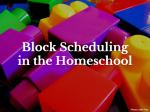
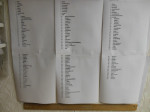

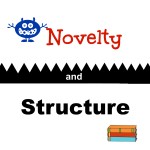

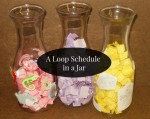
Or you can decide you’re working on say 4 projects right now (Sassafras Science, History of the World, Statistics, and Latin are our current main ones) and just do other things as they come up. I assign a couple-few writing projects every week. He has outside classes on Wednesdays, etc.
This sounds like EXACTLY what I need to start doing! I have all these wonderful programs, and we can’t seem to get to some of them by the time we do all the things that have to be done. I’ve been stressing when to fit them in, and this would allow time for all of them, not just the basics. Thank you so much!!!
I am little bit confused. How many hours a day the eclectic homeschooling is?
I have never heard of this before! What a fun way of doing school. I suppose you could use this for outings and “field trips” too….i think we might try this!
I am very confused. looping sounds interesting and something we might want to try, but I don’t think I am getting the hang of it from this post. Can you help me?
Basically you make a list, set aside a time, and work on the list until the time is up. The next day you start back on the list where you left off. When you get to the bottom of the list you loop back to the top and start it again. HTH